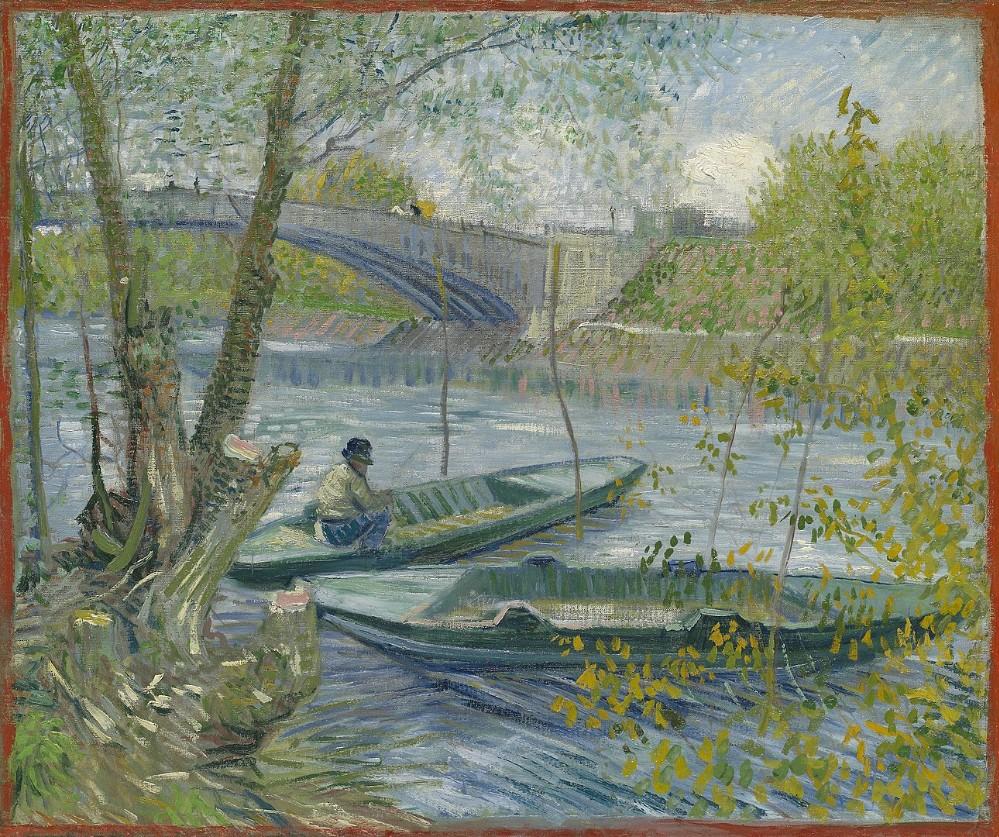
Vincent van Gogh, Fishing in Spring, the Pont de Clichy (Asnières), 1887.
In the spirit of the English poet Alexander Pope, art springs eternal, much like hope. Many artists have recognized the uplifting power of spring, particularly in times of societal and political upheaval. These ten artworks remind us that spring always follows winter's dark days of snow and ice.
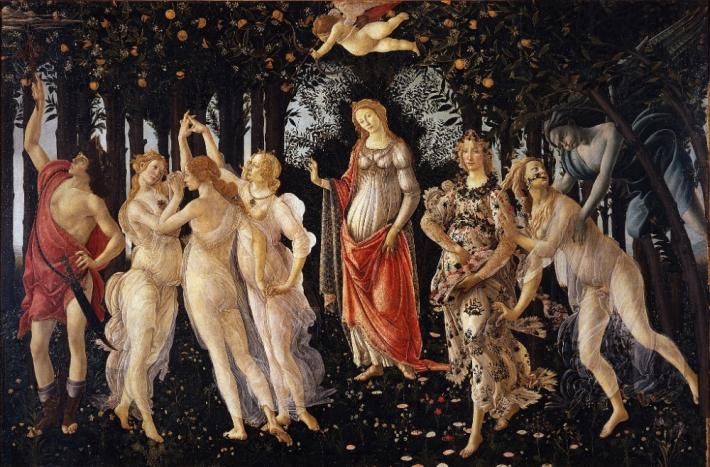
Sandro Botticelli, Allegory of Spring, 1482
Primavera, also known as the Allegory of Spring, was created in 1482 by the Italian Renaissance painter Sandro Botticelli (1445-1510). It features Venus, goddess of love, at the center, with Flora, goddess of flowers, on the right. Crammed with mythological figures like Zephyrus, the nymph Chloris, Cupid, the Three Graces, and Mercury, this is one of the most widely discussed and analyzed paintings in all of art history.
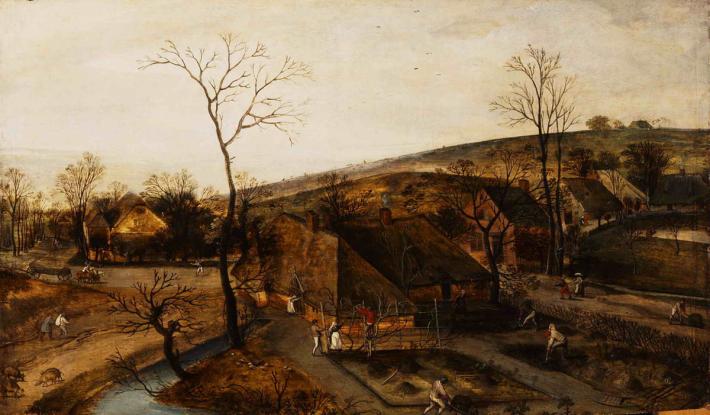
Jacob Grimmer, Spring , c. 1550-90.
The work of Flemish landscape painter Jacob Grimmer (1525-1590) might be confused with another Netherlandish artist, Pieter Brueghel the Elder, due to their similar styles. However, Grimmer broke away from Brueghel and practiced a more naturalistic form of painting, returning to the four seasons and twelve months of the year as subject matter. Grimmer captures Spring (1550-1590) very early in the season when the snow is gone, but any green shoots or blossoms have still yet to appear.
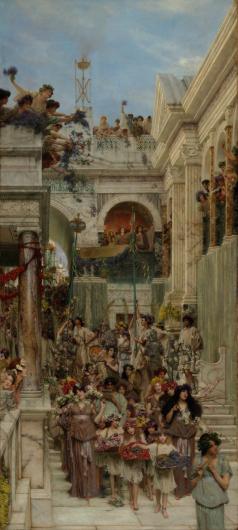
Lawrence Alma-Tadema, Spring, 1894.
Another painting entitled Spring is one of the most popular works of art by the Dutch artist Lawrence Alma-Tadema (1836-1912). Best known for his works depicting antiquity, Tadema relied on his friends and relatives as models for crowds of joyful people, jostling each other on a flower-strewn street in Rome as they celebrate Cerealia, a festival for Ceres, the ancient Roman Goddess of grain.
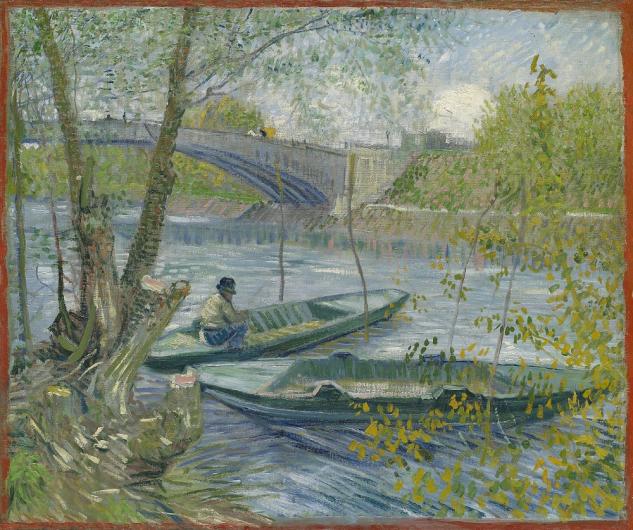
Vincent van Gogh, Fishing in Spring, the Pont de Clichy (Asnières), 1887.
We often associate Van Gogh (1853-1890) with his paintings of sunflowers executed in the vibrant colors of summer. However, he also painted cool, airy, moments, like that of Fishing in Spring, the Pont de Clichy (Asnières) (1887). Fishermen are early harbingers of spring, taking their boats out on the water as soon as the ice melts. Van Gogh painted this scene on the Seine where he often worked with his friend, the neo-impressionist painter Paul Signac (1863-1935).
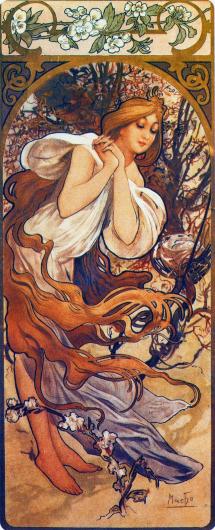
Alphonse Mucha, Spring, 1897.
The Czech Art Nouveau painter, Alphonse Mucha (1860-1938), worked in decorative arts and theater design, as well as portrait painting. His distinctive graphic style was popularized in theater posters, and he also briefly shared a studio with Paul Gaugin. Spring (1897), one of Mucha’s posters featuring the four seasons, typically shows his preference for beautiful, barefoot young women whose flowing hair mimics the flowers and vines that encircle them.
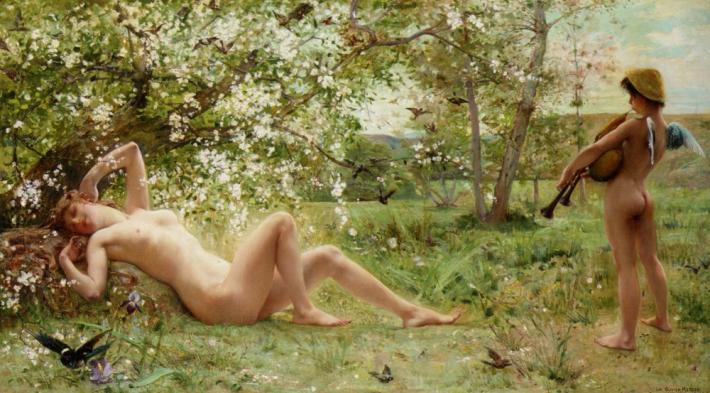
Luc-Oliver Merson, Awakening Spring, 1884.
The late nineteenth-century was a hotbed for allegorical paintings of spring. Many featured naked, nubile, young women whose sexuality awakened, bursting forth alongside delicate green shoots and cherry blossoms. French artist and illustrator Luc-Oliver Merson (1846-1920) painted several versions of this theme seen in his 1884 piece, Awakening Spring. Popular in his own time, Merson was awarded a Prix de Rome in 1869, though much of his work has since been forgotten.
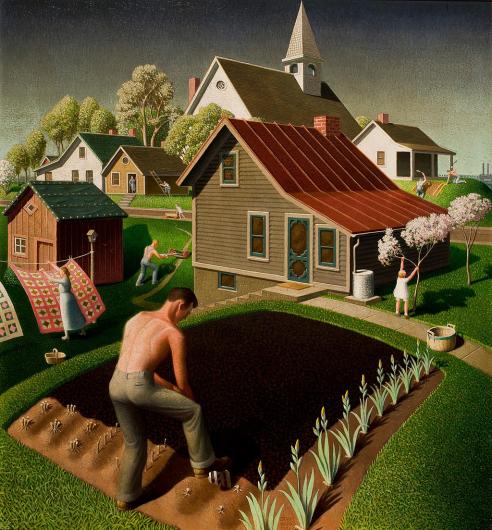
Grant Wood, Spring in Town, 1941.
Not all artists' thoughts of spring turn to sex. Spring in Town (1941), by Regionalist painter Grant Wood (1891-1942), demonstrates a less sensual approach to the season through gendered images of labor as men and women move from indoors to outdoors in small-town America. Best known for his stark double portrait, American Gothic (1930), Wood’s iconic representation of a farmer and his daughter has become one of the most parodied paintings of the twentieth-century.
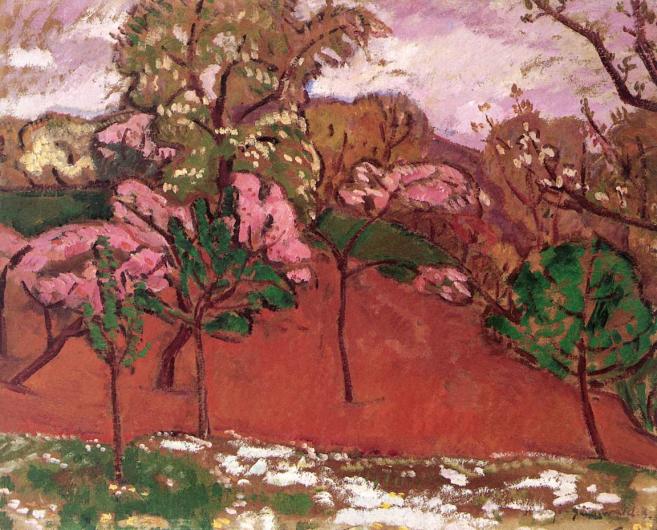
Béla Iványl-Grünwald, Springtime Landscape, 1910.
Hungarian painter Béla Iványl-Grünwald (1867-1940) was a modernist who focused on painting en plein air, but whose mature work, such as that of Springtime Landscape (1910), boasts the vibrant color typical of the Fauves. Although influenced by the work of French Post-Impressionist Paul Gauguin, Iványl-Grünwald spent most of his life living and exhibiting his work in Hungary.
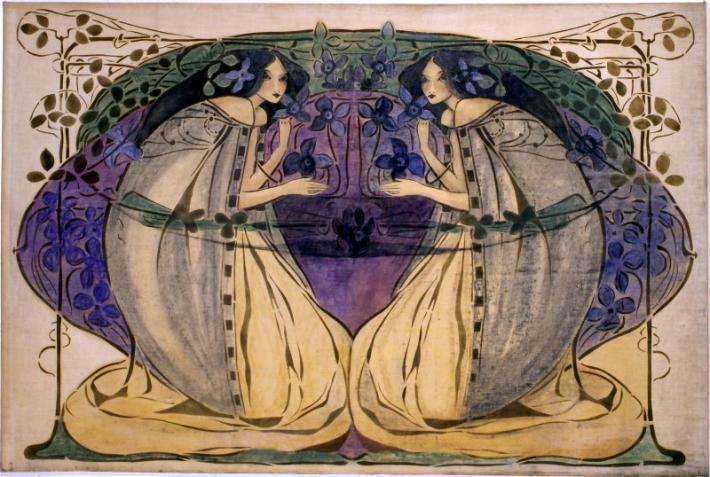
Frances Macdonald Macnair, Spring, c.1900-05.
Frances Macdonald Macnair (1873-1921) was a prominent artist in Glasgow, Scotland along with her sister, artist-designer Margaret Macdonald Macintosh. The influence of symbolist William Blake can be seen in Macnair’s mystical painting of Spring. Together, the sisters exhibited a variety of artistic work across Europe including embroidery, metalwork, and watercolors. Sadly, Frances’ achievements are not well-known, as her husband destroyed much of her work after her death.
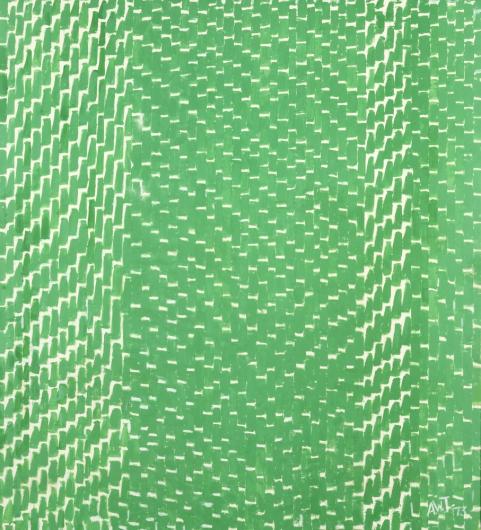
Alma Thomas, Spring Grass, 1973.
Alma Thomas (1891-1978) was a Columbia and Howard University-educated African American abstract expressionist painter. Her work was greatly under-appreciated until 1972 when she became the first African American woman to have a solo exhibition at the Whitney Museum of American Art. Thomas was also the first African American woman to have her artwork displayed at the White House and eventually acquired for their permanent collection during the Obama administration. Her color-saturated painting, Spring Grass (1973), vibrates with new growth.
Cynthia Close
Cynthia Close holds a MFA from Boston University, was an instructor in drawing and painting, Dean of Admissions at The Art Institute of Boston, founder of ARTWORKS Consulting, and former executive director/president of Documentary Educational Resources, a film company. She was the inaugural art editor for the literary and art journal Mud Season Review. She now writes about art and culture for several publications.























